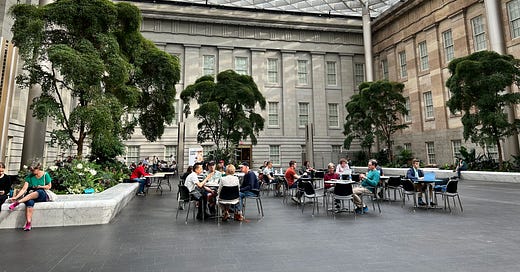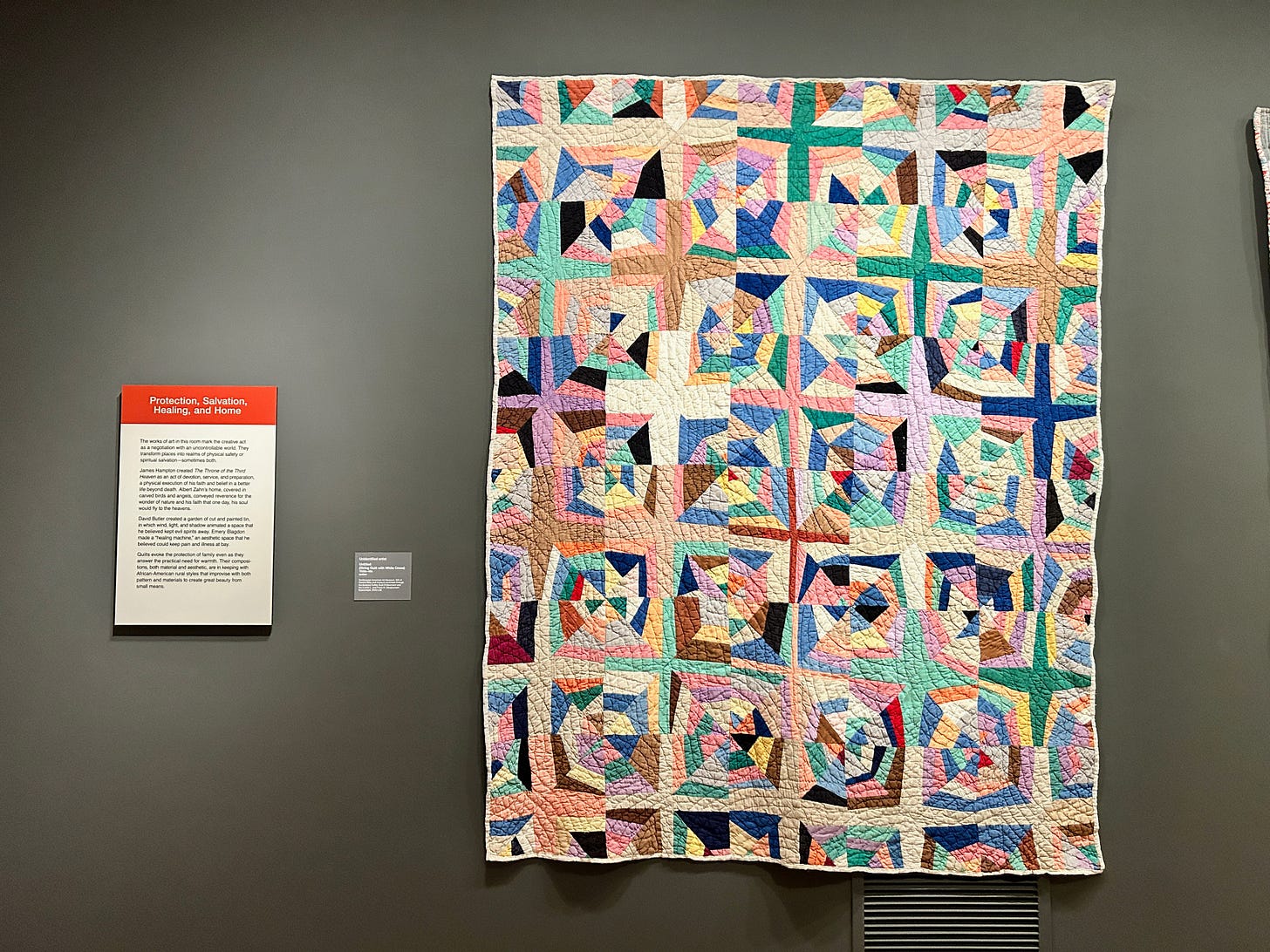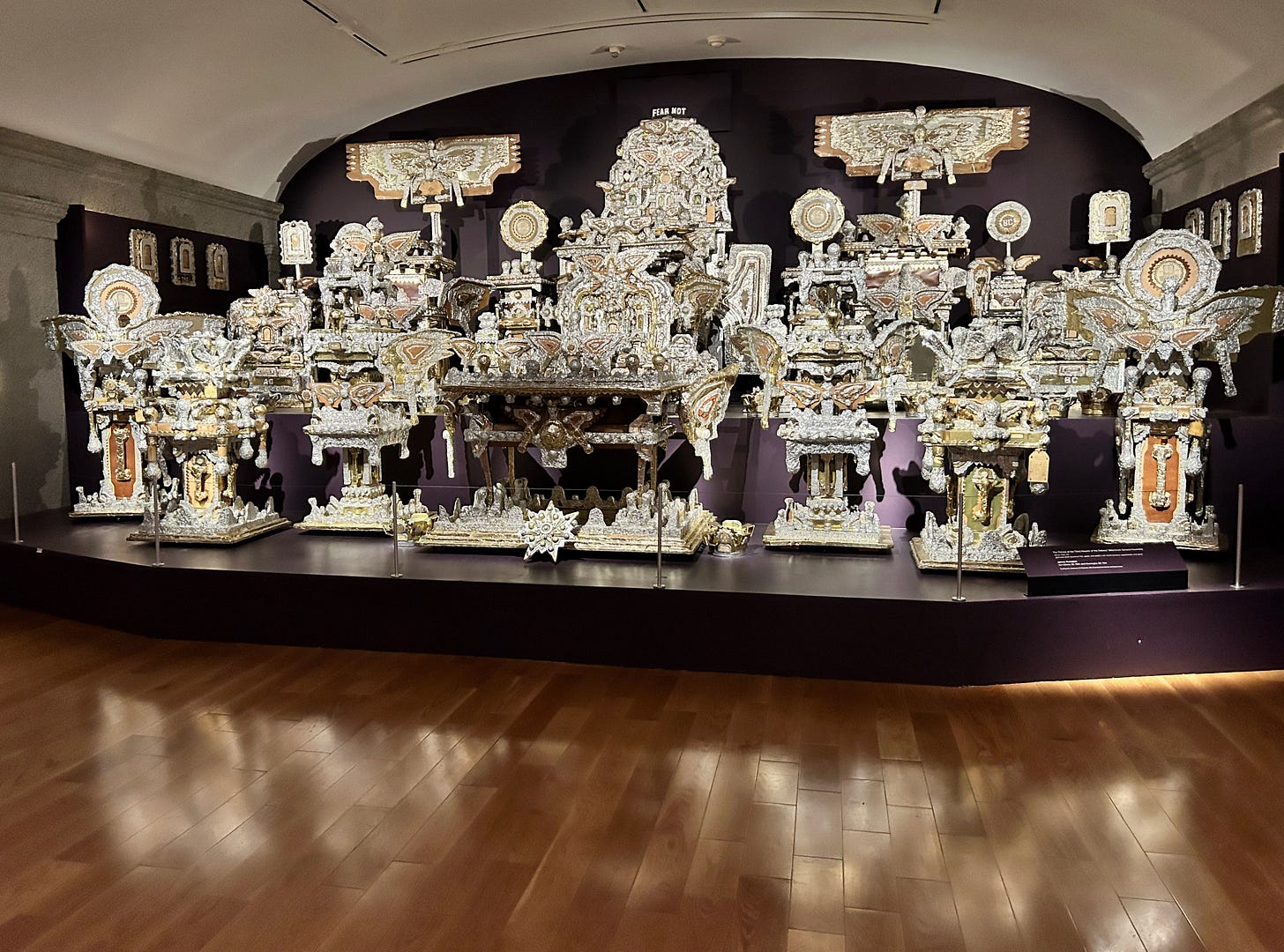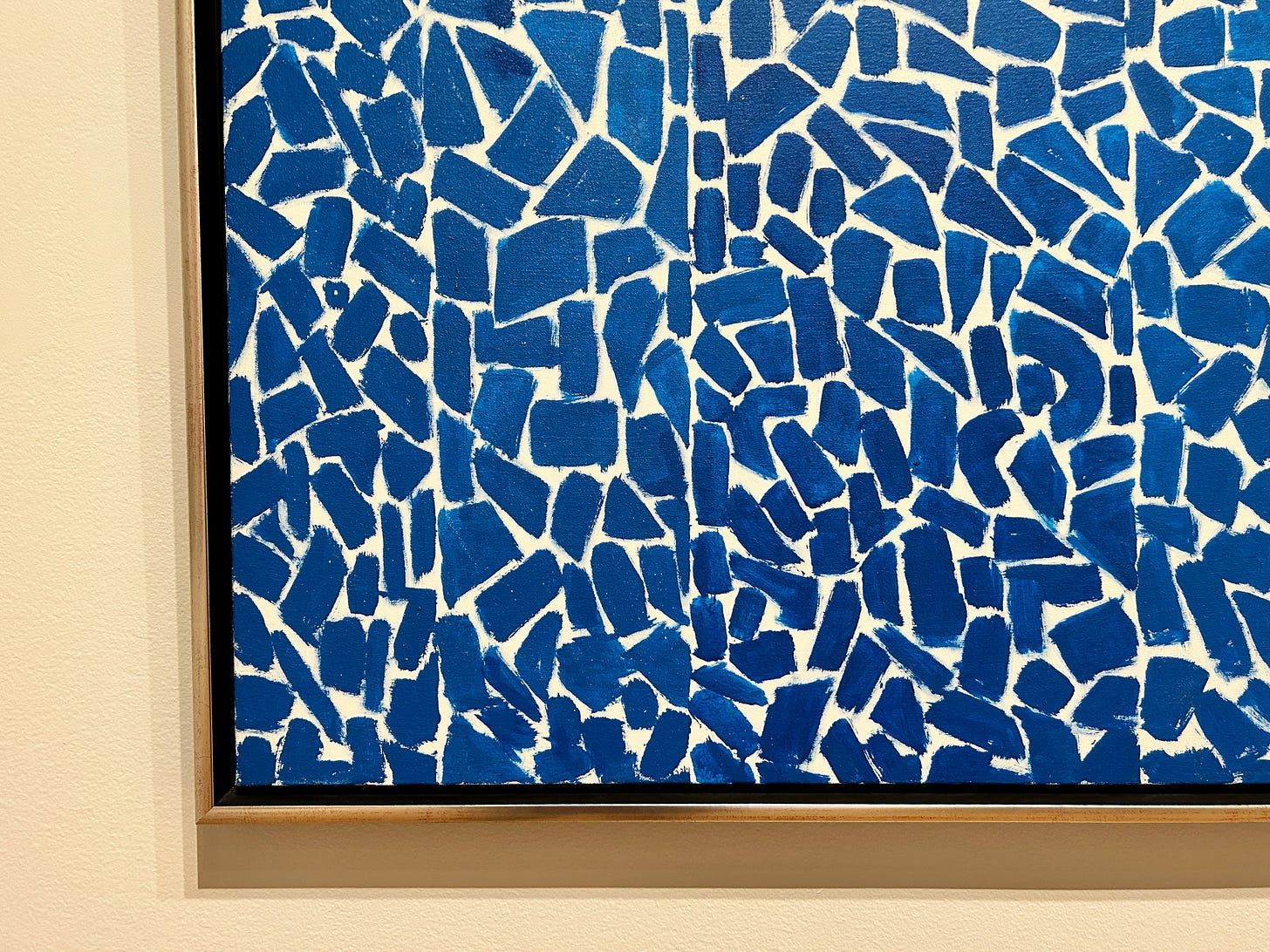Look up! Keeping my head high in the nation's capital
Aluminum foil, Alma Thomas, and getting a lifelong lesson from a D.C. security guard.
One of my many Roman Empires is this time when I was a high schooler visiting D.C. as part of a weeklong student government-type program called Presidential Classroom.
I was with a hundred plus other precocious 16- and 17-year-olds from around the country, touring the capital and creating a mock political system of our own that included journalists, which is, of course, what I did all week.
The moment I keep coming back to is this one day, when we were on a field trip to the Capitol, where I got shouted at by a security guard for shuffling my feet with my head down.
Imagine it: A mass of baby-faced young adults, dressed in business attire, wandering around the halls of the U.S. government, sure of ourselves but not where we were going.
To get to one of the floors, we had to take elevators in small groups, and I remember pouring out of the cramped space, looking down at the intricately tiled floors to make sure I didn’t trip on anything or miss any arrows or directional information that might be there.
“Look up!” The voice reverberated through the marble and granite room over the steady hum of tourists who were, all day, every day, in perpetuity, lost. “Look up!” she repeated over the crowd. “Always keep your head up,” she shouted. “The SIGNS that will tell you where to GO are up HERE…not down THERE.”
This woman was like a TSA security guard, even though we didn’t have those then. She knew how to talk to a crowd of people to make sure they heard what they needed know to get through the bottleneck in front of them.
“Look up.”
“Keep your eyes up.”
Those words ring in my ear often. Almost anytime I’m in a busy space and not exactly sure where I’m heading. But also when I’m trying to keep my metaphorical head up during down times.
I was thinking about this memory when I was in D.C. last October for a long weekend visiting my Uncle Jack, as well as my cousin Mary Louise and her daughter, Kate. (ML is my first cousin once removed, and Kate is my second cousin, but they are really more like aunt and cousin. More on my D.C. family soon.)
Everywhere I went, there were intricate rooftops and ceilings to look at and indications that D.C. is and has always been, despite its challenges and notoriety as home to the U.S. political system, a city on the rise.
I spent my first afternoon at the Smithsonian American Art Museum, which shares a Greek Revival building, completed in 1867 that was the former patent office, with the National Portrait Gallery.
Just sixteen years ago, architect Norman Foster designed the wavy glass-and-steel roof that now creates the Kogod Courtyard, one of the most soothing, inviting gathering spaces in the city.
This muted atrium replicates the feeling of a park, but inside. People sit at the tables of the cafe or on one of the many benches under the natural light roof, the collective conversations blending into a white noise that made me want to take a nap.
It was a wonderful place to recharge between galleries, my favorite of which was likely the one focused on folk art.
The gallery started with a few quilts from anonymous makers who “created great beauty from small means.” The same could be said about James Hampton, whose elaborate shrine made out of cardboard and aluminum foil is a shining example of something grand made from something so humble.
According to the museum, Hampton started working on this project, The Throne of the Third Heaven of the Nations Millennium General Assembly, in earnest around 1950 in a rented garage in his northwest Washington neighborhood.
He worked on it until he died in 1964.
In his workspace, he had a quote from Proverbs posted on the wall: “Where there is no vision, the people perish.”
Talk about Afrofuturism…
Later in the museum, I found a special exhibit — on display until June 2024 — about Alma Thomas, a longtime Washington D.C. art teacher who became a successful painter later in life.
Born in 1891 in Georgia, Thomas moved to D.C. and became the first graduate of the Howard University art department. She went on to teach art for 38 years in the public schools of Washington, D.C.
Around the time James Hampton died in 1964, Thomas’ second career was taking off as she entered her mid-70s. She continued to paint, despite struggles with arthritis, for another decade until her death in 1978.
Of all the portraits in the National Portrait Gallery, this is the one I wanted to share here.
George Washington Carver was always looking up.
The Missouri-born scientist and science communicator became one of my personal heroes after visiting the museum at the National Monument near where he was born in Diamond, about an hour from my hometown.
I’ll never forget learning that one of the many techniques he taught through the extension service was how to make pigments using clay and soil and other natural ingredients from your area. He wanted painting to be free. For everyone.
Washington D.C. is one of the most interesting places to me. The fact that all of the Smithsonian museums are free means that people are coming and going from these gallery spaces, meeting interesting people who shaped our country and the artists who tried to depict what life is like living here.
The architecture and art collections, not to mention all the history bound in these buildings, makes it one of the most culturally rich places that’s often overlooked because of politics.
Tourists and locals alike can pop into these museums — or snag last-minute tickets to the high-traffic ones, like the National Museum of African American History and Culture — or grab a coffee with a friend at the Kogod Courtyard. They can make a once-in-a-lifetime visit to the Vietnam Veterans Memorial or browse the botanical gardens on their lunch break or play catch on the green grass of the mall, in the shadow of the Washington Monument.
As we enter what will surely be a difficult year, politically speaking, I’m going to try to remember that anonymous quilt, that James Hampton shrine, and all those blocky paintings from Alma Thomas. I’m going to replay in my head the comforting acoustics of that courtyard. I’m going to think about all those Presidential Classroom kids and what they learned that week that they still think about today.
I’m going to think about that Capitol security guard and wonder where she is and if she’s OK.
After what’s been happening these past eight years, are any of us OK?
I’m going to take her advice and keep looking up.
I hope you are staying warm, friends! This is the second in a little series I’m working on about Washington D.C. to kick off the new year.
The second issue of the print magazine is, as you might have read, slightly delayed, but this extra bit of time has allowed me to add a few more subscribers who will be getting this upcoming zine and make a few final design tweaks.
If you want a zine, don’t forget to share your address!
Here’s the Google form where I’m collecting mailing addresses. Make sure you add your address there so I can mail this issue (and future issues) to you. Your support as a paid subscriber makes this whole project possible, so this zine is a small way for me to say “thank you.” Plus, I think it’s a fun way to bring an online project offline.
Looking up, as always,
Addie













